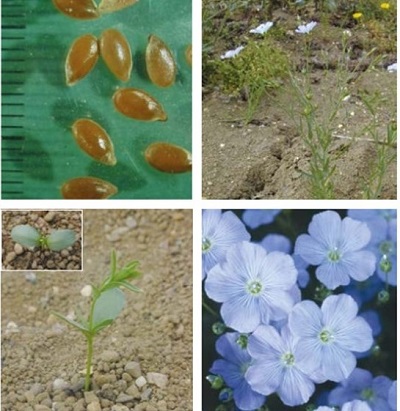- Home
- Knowledge library
- Distribution and biology of volunteer linseed weeds in the UK
Distribution and biology of volunteer linseed weeds in the UK
Linseed is a UK weed that can occur as a crop volunteer. Find out how to identify and control it.
Overview
Linseed and flax are different cultivars of Linum usitatissimum. The tall form, flax, is rarely grown for linen fibre. The short form linseed is the usual crop grown to produce linseed oil. Both can occur as crop volunteers, generally in the season following the crop. Autumn-germinating plants may be killed by winter frosts.
- It has value to biodiversity
Description
It is a hairless, annual dicotyledon, up to 75 cm tall. The plants have slender stems and spear-shaped leaves. The large, usually blue, flowers have five petals.
Key features
Young plant: The three-veined leaves are well spaced and needle-shaped.
Flowers: All the sepals are pointed and the petals fall off early in the afternoon.

Location and life cycle

Geographic distribution
Linseed is found in southern Britain as a volunteer from previous crops or the result of scattered bird seed on banks and verges.
Soil type
It can grow on a wide range of soil types.
Seed statistics
- Seed weight: 8 mg
- Seeds/plant: <1 year
Management
Control can be helped by a stale seedbed after the crop is harvested to encourage predation and germination of seeds. Linseed is surprisingly tolerant of a wide range of herbicides.
For advice on herbicides, please speak with your agronomist or adviser.
When was this information last updated?
This page is based on content from the encyclopaedia of arable weeds publication. Since it was first released in 2008, the publication has been redesigned several times but not revised. However, it remains a good foundation for general information on the distribution and biology of weeds.

